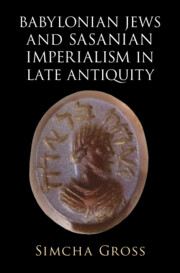Book contents
- Babylonian Jews and Sasanian Imperialism in Late Antiquity
- Babylonian Jews and Sasanian Imperialism in Late Antiquity
- Copyright page
- Contents
- Acknowledgments
- Introduction
- 1 Jewish Society under Sasanian Rule
- 2 Competing for Power
- 3 Beyond ‘Tolerance’
- 4 Forgetting Persecution
- 5 Rabbis and Fire Temples
- 6 Kings and Religion in the Talmud and in the Imagination of Sasanian Communities
- Conclusion
- Bibliography
- General Index
- Source Index
3 - Beyond ‘Tolerance’
The Logics of Sasanian Violence against Jews
Published online by Cambridge University Press: 04 April 2024
- Babylonian Jews and Sasanian Imperialism in Late Antiquity
- Babylonian Jews and Sasanian Imperialism in Late Antiquity
- Copyright page
- Contents
- Acknowledgments
- Introduction
- 1 Jewish Society under Sasanian Rule
- 2 Competing for Power
- 3 Beyond ‘Tolerance’
- 4 Forgetting Persecution
- 5 Rabbis and Fire Temples
- 6 Kings and Religion in the Talmud and in the Imagination of Sasanian Communities
- Conclusion
- Bibliography
- General Index
- Source Index
Summary
In an epistle written around the early ninth century, the Babylonian Jewish polemicist Pirqoi ben Baboi chastised Jewish communities around the Mediterranean for adopting certain Palestinian practices that he dubbed “customs of persecution” (minhagey shmad).1 He contended that these customs were not products of the authentic continuous transmission of Jewish tradition extending back to Moses on Mount Sinai, but erroneous corruptions introduced as a result of Roman persecution of Jews. The Babylonian rabbinic tradition, by contrast, was more authentic because Jews had enjoyed consistently peaceable conditions under Persian rule. They were therefore free to practice and preserve traditional Jewish law accurately in an over millennium-long unbroken chain of transmission.
- Type
- Chapter
- Information
- Babylonian Jews and Sasanian Imperialism in Late Antiquity , pp. 132 - 165Publisher: Cambridge University PressPrint publication year: 2024

